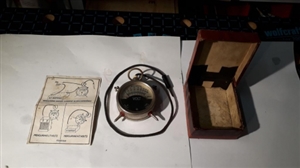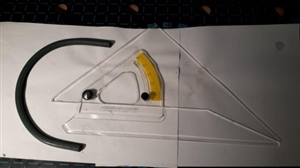
Dad's and grandad's sliderules

Grandad's 'multimeter'


Flexicurve and adjustable square (now replaced by CAD)

Dad's AVO model7

Case and U2 battery adaptor he made to get away from the strange square battery for the ohms range.
Best regards
Roger








We're about to take you to the IET registration website. Don't worry though, you'll be sent straight back to the community after completing the registration.
Continue to the IET registration site